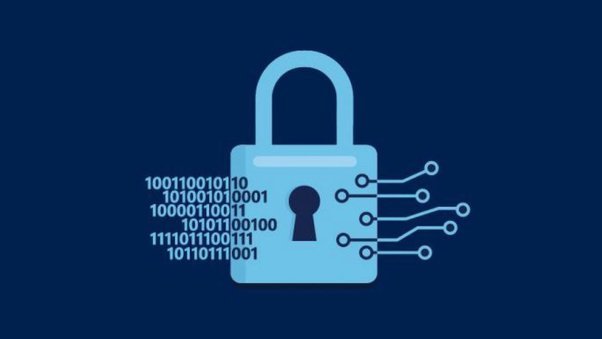We use cryptography everywhere in our everyday life. For instance, we use it to send online purchase passwords securely to multiple networks. Email clients and bankers use cryptography to save your passwords. Cryptography is used to authenticate devices and to other devices and devices and people. It is also effective for securing the IoT-connected world’s transmitted information.
Cryptography is part of modern life, and if the cryptography generators stop their functionality for a day, modern life will come to a halt. Internet traffic and cell phones will not operate, bank transactions will come to a standstill, and our private information will be accessible to anyone, and those with bad intentions will use it to harm us. Cryptography is a vital way in inhibiting all that from happening. It secures communication and information with a set of rules that allows someone to receive certain intended information and not anyone else.
OLD AGE CRYPTOGRAPHY
In the old days, security by obscurity was used by cryptography to secure transmitted information. The technique used to ensure the information was kept a secret except for a few hence the name “obscurity.” Communication was made secure, but it was hard to implement it on a broader range. The technique was effective for two parties to communicate in a secure network.
The technique is no longer practicable. An electronic communication system with intellectual and commerce properties needs to be secured and accessible across continents and oceans; otherwise, people with adverse intentions would interrupt it.
CRYPTOGRAPHY’S NEXT PHASE
You might be wondering how it is possible to implement a high-security level in a system that handles billions of transactions in a short while. Improvised cryptography comes in. it is vital for secure, accessible communication in our daily life. How is it used in every aspect of our everyday life? We depend on algorithms to secure our exchange information all around the time. The algorithms are of a high standard and scrutinized in an open environment such that it is easy to find and address vulnerabilities.
The basis of a current cryptographic system is to ensure we do not depend on algorithm secrecy anymore but the keys’ secrecy. Here are four primary goals of the modern cryptographic system:
- INTEGRITY
The information in transit or storage must not be modified. Any modification will be detectable. The system ensures any information received or sent to a data link or network is not altered during transit. For instance, there can be an effort to insert a virus or tamper a message to control with the recipients’ PC or any other device without their consent. To avert this from taking place, it is vital to ensure transmitted information is not modified.
- CONFIDENTIALITY
In confidentiality, there is no disclosing of information to anyone that is not authorized. It is achievable through encrypting send and receive messages with a cryptographic algorithm with a key known to the recipient and sender. An interceptor can obtain the encrypted information, but it will not decipher it.
- AUTHENTICATION AND IDENTIFICATION
Before exchanging any information, identify and authorize the recipient and sender. This aims to identify the user or object and authenticate them before initiating an operation or communication. Once the recipient has been certified by the sender, they can go ahead and communicate.
- NON-REFUTATION
The communication system has multiple messages to exchange, and there is a need to trace the sender’s incoming messages. The process is essential to ensure the sender does not decline to send the message. There is the transmission or disclaim of the message. The system provides transaction traceability and legitimacy.
HOW DO WE USE CRYPTOGRAPHY IN OUR DAILY LIFE?
We have known cryptography is vital in every aspect of our daily life. With that in mind, it is essential to understand the fundamentals of how it works. The below are some of the examples of how we use cryptography in our everyday life. Following are some of the aspects we have heard about.
- Cash withdrawal – Many banks have adopted an easy way to withdraw cash-using ATMs. It remains the most secure and easiest way to withdraw cash. Though you do not have to know why and how that is made possible, you should note it is all about encryption. The encryption is known as Hardware Security Module Encryption (HSM). It protects your PIN privacy and other sensitive information that is on your credit or debit card. The system also ensures cyber criminals do not access your PIN during data transactions or when using your ATM.
- HTTPS – It is the short form of Hypertext Transfer Protocol. It is an internet protocol. Information transfer is done widely across the World Wide Web, which is the Internet. The Internet has been in use since the 90s, and most of us are not aware why “HTTPS” comes before “www” in most internet addresses. The reason is it helps one to set information freely on the Internet.
Information stored in HTTPS websites are plain texts, and you do not have to be an internet expert to know if it is relevant or not. It needs to store relevant information and other sensitive data. The information is secured with cryptographic secure socket layers. - Emailing – Email sites and apps like Gmail are not good at storing sensitive data or information, but it serves as a gate pass. YourYour email address has a unique piece of data cyber criminals require to infect your devices with malware or adware. Cryptography generator ensures your email has SSL encryption making it hard to receive a text in your email without encryption.
- Securing Houses -The best way to explain the importance of cryptography is how it is used in your house. Let’s say you have installed security cameras around the house or you have installed the safest lock in the market, and a criminal can easily walk in without worrying about the installed security cameras. The same applies to your PC or other devices, you may have installed top-notch antivirus software, but it takes an infected USB to risk your data.
With the increased use of cloud-based storage, smartphones, and IoT devices, it is essential to pay attention to your privacy, encryption, and cryptography. Be keen when browsing use devices with end-to-end encryption. For your email, use PGP and Proton Mail services.
FINAL THOUGHT
We should emphasize using cryptography anywhere and more often. Encryption and cryptography are like locking your house. No one will try entering your home, but you are doing it with the mind that someone might enter. You use cryptography with a paranoid mind, but it doesn’t mean you are entirely safe. The more you use encryption and cryptography, the more secure you are. Thanks to the cryptographic system.



GIPHY App Key not set. Please check settings